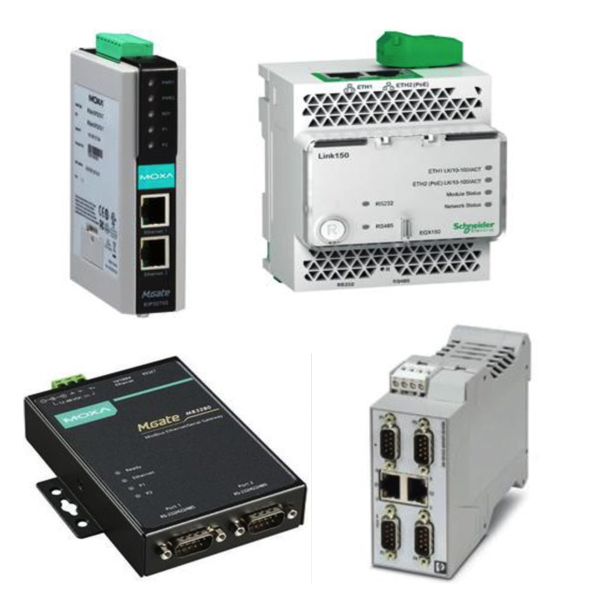Ethernet & Serial Gateways

A gateway is a hardware device that joins two networks so that devices on one network can communicate with devices on another network. Network gateways serve as an entry and exit point for a network as all data traffic passes through it before being routed.
Gateway vs Router Both gateways and routers are hardware devices in a network that monitor and control data traffic and determine its flow between networks. A gateway often works with a router to complete the routing process. Before arriving at the router, data packets go to the gateway first. The gateway checks the header information and makes sure there is no error in the destination IP address. It then carries out data and protocol conversion on the packet according to the destination network. The processed packet is forwarded to the router where it determines the best route to the final destination.
More Information about Ethernet & Serial Gateways
Ethernet gateways are devices that allow protocol conversion to an EtherNet/IP network. In automated industrial or SCADA (Supervisory Control and Data Acquisition) systems, an Ethernet gateway often facilitates connecting serial devices to an Ethernet network, allowing multiple connections and a conversion between fieldbus protocols such as Modbus or PROFIBUS (Process Filed Bus) to EtherNet/IP or PROFINET (Process Field Net).
FAQs
What network protocols does a gateway work with to link serial devices?
A gateway links serial devices by working with network protocols such as TCP/IP, UDP, and Modbus TCP for reliable communication across Ethernet networks.
Basics of Switches, Routers & Hubs
Ethernet hubs, switches and routers connect computers to networks, devices and other computers.
Ethernet hubs are the least intelligent of the three devices. They simply take any message that is received and transmits it to every other device connected to that hub. For example, if CPU 1 on a network wants to send a message to CPU 5, it will send that message through the hub.The hub will then take that message and send it out to every connected device on that hub regardless of the intended target. When CPU 5 receives that message and wants to respond, it will send its response through the hub which sends it to every connected device. Ethernet hubs do not manage any data that is sent and tend to bog down networks. They also do not offer much security for the network. For these reasons, Ethernet hubs are are being replaced with network switches.
Switches transmit data from one device to another on the same network. Unlike a hub, switches use a switch table to learn where data came from and where to send it. Switch tables store Mac addresses and device ports. By storing this data, a switch can operate more efficiently than a hub, greatly reducing the traffic within the network.
Routers transfer data between devices while learning the location of those devices within the network. They are also a junction between two or more networks. An example of this would be a home router where the home network is connected to the Internet. Another example would be when the router connects two or more networks with different business functions. In addition to connecting two or more networks, a router offers important security features that help protect the network.

